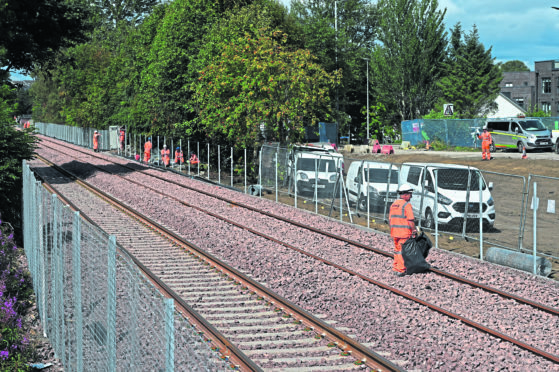Transport chiefs have been accused of “palming off” responsibility for major disruption caused by the 24-hour rail work in Aberdeen.
Work to double track as part of the Aberdeen to Inverness line improvements, between the city and Dyce, has been underway for some time and is due to wrap up next week.
The line has been closed since May 12 and is expected to reopen on Monday.
And while the work is expected to transform rail travel for commuters, there has been significant disruption to locals due to the noise day and night.
A north-east MSP challenged Transport Minister Michael Matheson on whether the government would ensure residents would be compensated, but was told that it was an issue for local authorities.
Peter Chapman claimed the government had effectively told people to “grin and bear it”.
He said: “The Aberdeen to Inverness project is a huge investment and is sorely needed to make the line competitive.
“But this government is clearly not listening to a small number of people who want to talk about the disruption to their lives.
“Instead, the SNP expect councils to send environmental health officers out to face the music. Residents have effectively been told to grin and bear it.”
Mr Matheson said in his response that these types of works can lead “unavoidable noise and disturbance” in the community, but said that contractors had been encouraged to use “all reasonable diligence” to control the noise where possible.
He added: “The responsibility for dealing with noise nuisance complaints, including construction noise, rests with the local authority, which has a duty to investigate complaints…
“Each complaint would be for investigation by an environmental health officer.
“Accordingly, as there are established mechanisms to seek recourse, the Scottish Government has no plans to compensate lineside neighbours affected by the short-term works between Aberdeen and Dyce being delivered as part of the Aberdeen to Inverness Rail Improvement project.”
The first phase of work is scheduled to be completed by next year.
Platforms, station changes and signal upgrades will follow by 2030.
